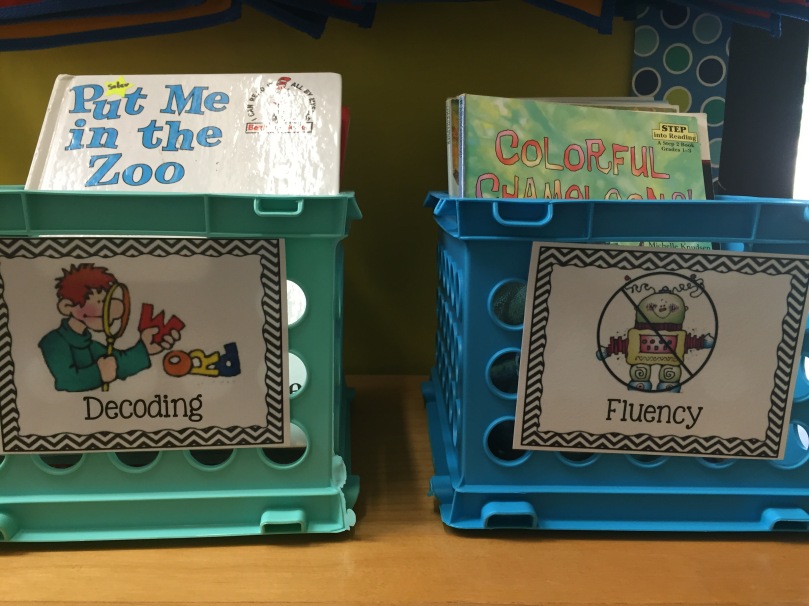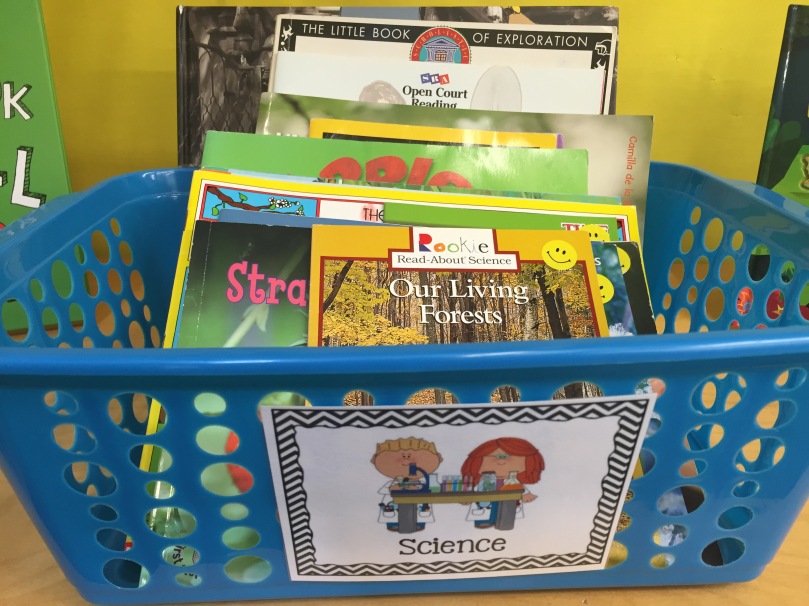Every conference began this way. “What are you working on today as a reader?” Response: “I want to read yellow (aka above-grade level) books.” Despite my varied best attempts to instill in this reader the purpose for reading at his independent level and my knowledge that he may never read “yellow” books that year, his reading goal remained the same. This was a direct failure on my part and I was far too frequently hearing students want to advance to the next level – not wanting to find the next great book to read.
This problem nagged at me all school year, until I attended the NCRA conference and heard Donalyn Miller as the keynote speaker. She spoke directly to me – and my aspiring “yellow” readers. In reference to a short blog post by Irene Fountas my discomfort was remedy. Leveled texts are a tool for teachers to plan for instruction and monitor progress – NOT a label for students and parents. I had permission to rip the red, green, blue and yellow stickers off the books in my classroom library – and I did. Well, I first wrote the DRA level in teeny tiny numbers on the back of each book for my reference.
While liberating at first, I’ve returned to my classroom library, trying to figure out how to arrange the unleveled books while scaffolding readers to select books they can read.
Most books are organized by a category. Kids need opportunities to select books they have background knowledge about and motivation to read. Sorting through leveled books to find one that fits these two criteria takes kids mental energy away from picking a readable book. By setting up the library where kids can easily locate books they already know about and are interested in reading, they have more capacity to look through that limited selection and find a book they can actually read.
 Sometimes Teacher’s Pay Teacher’s is worthwhile, where I opted for $5 book bin labels instead of creating my own.
Sometimes Teacher’s Pay Teacher’s is worthwhile, where I opted for $5 book bin labels instead of creating my own.
Some books are organized by reading skills. After sorting by topic I still had lots of books that were initially labeled “beginning readers.” I wanted to avoid ALL labeling of this sort, so decided to group them by reading goals. Typically beginning readers are working on decoding and fluency. I have bins that match those levels so kids can also shop according to their reading goals. Additionally, more advanced books have new vocabulary and multi-syllabic words with corresponding labels.
Easier books in each bin have a “smiley face” tag. The purpose is two-fold. Beginning readers typically have a more challenging time sorting through books to find one that fits. The smiley face is a simple cue to direct them toward books with less complexity. Additionally, more advanced readers might check these books out when trying a new topic where they have limited background knowledge.
Now I’m eagerly awaiting for my readers to arrive and get the right books into the right hands at the right time.
Update: check out Good Bye Level Library Part #2 for five lessons to support readers selecting their own books



I love this!! At a time when many of my teaching of friends are really struggling on how to set up their classroom library, I found your article to be “right on.” I especially love how you put a smiley face on easier books in each bin! I teach Pre-K now but will certainly put your ideas in my “bag of tricks”!!
LikeLike
[…] school began I said goodbye to my leveled classroom library. I rearranged books to support independent readers – NOT lexiles and labels. After a few […]
LikeLike
[…] I removed the reading levels from my classroom library I taught readers how to make independent book choices based on a variety of strategies. Last week, […]
LikeLike
Simply fabulous! I too, am a big Donalyn Miller fan. As in all parts of our lives, our reading life must be authentic. What a great way to model that value. I’m thinking we may need to make some changes at Saigon South International School! –Tara Ronzetti, Instructional Coach for Literacy, SSIS
LikeLike
[…] I commented about removing the levels from my classroom library on a post from Irene C. Fountas and Guy Su Pinnell’s Facebook group. Their post was […]
LikeLike
[…] my post Good-Bye Leveled Library on setting up a student-centered classroom library without reading […]
LikeLike
[…] Which makes the classroom library all the more critical to develop. I have taught in five different classroom in three very different schools – ranging from Title 1 to private schools. Not all classroom libraries are created equally, and this is problematic. I have been in classrooms with prepackaged leveled libraries, rooms with no library at all and rooms with huge ranges of reading materials, sometime organized by levels and sometimes not. In fact, I never gave much thought to my classroom library until I realized that to develop independent readers I must first teach them how to independently select the right books to read. The classroom library makes all the difference. […]
LikeLike